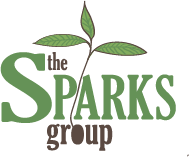An HR Manager’s Guide to Developing Leaders
Vertical development provides unique opportunities for more dynamic, interesting, and long-lasting learning and development (L&D).
Key Takeaways:
- Focusing solely on developing competencies (horizontal development) only gets leaders so far as the world becomes more complex
- Vertical development provides a roadmap HR can use for what growth looks like and for employees’ stage in that journey
- The framework also helps HR leadership unify employees around a philosophy, improve recruitment, and deliver training that is worth people’s time
Part of successful talent management is ensuring that HR processes and values are integrated with the organization. HR leaders play a critical role in ensuring employee practices are cohesive and supportive, and effective leadership development is a critical component of human resource management for today’s businesses.
Vertical development can reframe an organization’s thinking about managing and leveraging the strengths of its people and improving leadership growth. This guide walks through how HR managers can use vertical development to help leaders increase their capacity and improve their organization.
The trouble with competency development
The evolution of leadership development in human capital management is fairly recent. We weren’t really thinking about developing employees until the 1940s and ’50s. This is when the idea of “competencies” was launched. The idea that “I need to be good at something” took hold and became the foundation of leadership development and other aspects of professional life we still use today.
And competency is important. We have to know how to do what’s required to get our jobs done. But the limitations of competencies have become increasingly apparent as the world has become more complex and is changing faster than ever. What we know (competence) becomes limited as we get into more complex environments with greater demands.
Ultimately competencies are insufficient. They’re helpful up to a point – typically through early to mid-career, where we’re still learning how to do the things associated with our industry or job. But as we move into leadership roles and are asked to deal with increasingly complex environments, how we think becomes more important than what we know.
The other challenge with competencies is that they’re hard to work with. For example, we may receive feedback at work that we’re not a strategic enough thinker and need to become “more strategic.” What does that mean, exactly? What does that look like? There’s no real roadmap to get better at that.
Another example is the term “business acumen.” What does it really mean when we’re told we don’t have enough of it? Most organizations don’t provide any framework around developing competence in business acumen. How do we know when we have enough? Is it financial? Related to the operating model or products? A specific function? There’s no level of transparency or clarity beyond the headline.
These competencies are just not described well in most organizations. There’s no universal progression, so it’s a challenge to know what growth and improvement look like.
We can always add more competencies to our toolkit, which won’t hurt anything. But at some point, as we try to become leaders, the return on investment for those skills diminishes.
The vertical development roadmap for HR
One of the significant benefits of vertical development is that our growth tells a story. We understand the limitations of one stage that invite us to enter the next stage. We know what the strengths are. We can see where we are in the journey and what it will look like for us to grow.
Vertical development offers a roadmap in a way that horizontal development (competency) does not. This is why the framework can be extremely valuable to HR managers and human capital programs. Let’s look at how vertical development can be used in organizational philosophy, recruitment, and training.
1. Unifying around an organizational philosophy
Successful human resources strategies are integrated around a core set of values and beliefs the organization holds. Competencies on their own don’t capture the entirety of what organizations need to ensure their people are aligned. They’re limited in their utility in that sense.
Vertical development offers a better, more effective foundation to build out human capital programs, whether compensation, performance management, leadership development, or something else. It can guide each aspect of HR with a clearer path and objectives.
Many HR departments don’t take an integrated approach to all these moving parts. It’s possible for leadership development to be completely disconnected from other training programs, succession planning, and performance management operating as stand-alone programs.
One of the major opportunities for HR that vertical development provides is to create more integration and cohesion across these programs. This can help businesses increase employee retention and satisfaction. When it’s clear what everyone is working toward and they can clearly see their place in the structure, they’ll feel more purposeful.
2. Employee recruitment
Vertical development can help HR managers write job descriptions in a completely different way that helps recruitment efforts. Instead of focusing on skills that can be learned, descriptions can center around what it looks like for the employee to grow and improve.
For example, a post might say that the candidate needs to be able to look out one month in advance. Then, the next level requires someone who can look a quarter out. The next is 12 to 18 months, then 3 to 5 years. With vertical development, we can give those specifics because we know someone’s ability to think in longer timeframes grows as they grow vertically.
HR leadership can take all these lines associated with vertical development and map them to career paths and job descriptions. These then paint a picture for people of what they will learn and how they’ll have to think to be ready to fulfill higher-level jobs.
For example, managers can say that they would expect the person at a particular job level to be able to focus on outcomes, work collaboratively with other people, and lead a small team. This is describing someone at the Achiever stage of vertical development.
Then, to grow and get promoted, the next level requires someone who can challenge assumptions and reconceive systems and programs (Redefining stage). It needs someone who can solicit and incorporate multiple perspectives without making judgments about them.
Vertical development thus lends itself well to assessing job performance, creating job descriptions, creating a succession plan, and much more.
3. Training
Vertical development can also be incorporated into training programs, whether as part of an existing program, to balance out horizontal development, or as a full-on vertical structure.
The framework’s story aspect is helpful for training. People can tell themselves a story about their growth and journey. They see the path and place themselves within it. They can contextualize their development, which is very powerful.
Very few organizations organize their human capital efforts around vertical development. But those that do take a much more innovative approach to how they think about and manage talent. Incorporating vertical development yields many more benefits to the organization than the traditional competency-based approach.
Introduce and integrate vertical development into your HR strategy with The Sparks Group
HR managers can better approach leadership growth and programming with vertical development. The framework can be used from the foundation up to map job structure and progression and guide HR programs for a stronger organization.
The Sparks Group is here to help organizations succeed with a better approach to leadership development. Learn more by setting up a free 30-minute discovery call.

